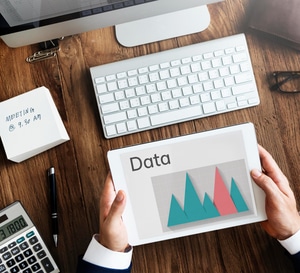Effective use of data has become more important to modern businesses than many could have imagined a decade ago. As a piece on why every company needs a data strategy back in 2019 put it, data now “matters to any company” and is “one of our biggest business assets” in the modern environment. These are indisputable statements at this point, and they’re why every business hoping to succeed today needs to modernize its data platform (if it hasn’t already).
That said, even among those who like the idea of embracing data, many don’t quite understand what modernizing means in this sense. In this piece, we’ll look at why this needs to be done, who needs to do it, and what, ultimately, the process entails.
Why Modernize Data?
In very general terms, we addressed the why above: Effective data usage is indisputably one of the greatest assets available to businesses today. More specifically though, the role of data in business comes down to insight across various departments and operations. A robust data operation allows companies to understand needs and develop detailed processes for hiring; it enables marketing departments to make more targeted and fruitful efforts, and it helps management to recognize internal trends that drive or detract from productivity, and act accordingly. Modern data essentially streamlines business and makes it more efficient across the board.
We would also add that for smaller businesses, the why comes down to competition. The democratization of data in modern times is giving smaller companies the means to match larger competitors in certain efforts, and thus giving them a chance to keep pace.
Who Modernizes Data?
The answer to who brings about data modernization within a company will vary depending on the size and resources of the company at hand. For smaller businesses or those with particularly limited resources, it is possible to make this change internally. Much of the data modernization process comes down to using tech tools that can gather and catalog information in a largely automated fashion.
At the same time though, companies with more resources should consider that data analytics is a field on the rise, and one producing legions of young, educated people seeking work. Today, countless individuals are seeking an online master’s in data analytics specifically on the grounds that the business data analytics industry is in the midst of a projected 13.2% compound annual growth rate through 2022. Jobs in the field are on the rise, meaning this has become a significant market. This is all to say that it’s reasonable at this point for businesses seeking to modernize their data operations to hire trained professionals specifically for this work.
What Should Be Done?
This is perhaps the biggest question, and it depends largely on what a given business entails. For instance, for businesses that involve a focus on direct purchases from customers, data modernization should focus on how to glean more information at the point of sale, build customer profiles, and ultimately turn advertising into a targeted, data-driven effort. Businesses with large-scale logistics operations should direct data improvement efforts toward optimizing the supply chain, as Inzata has discussed before.
Across almost every business though, there should be fundamental efforts to collect and organize more information with respect to internal productivity, company finances, and marketing. These are areas in which there are always benefits to more sophisticated data, and they can form the foundation of a modernized effort that ultimately branches out into more specific needs.
At that point, a business will be taking full advantage of these invaluable ideas and processes.
Written by Althea Collins for Inzata Analytics














